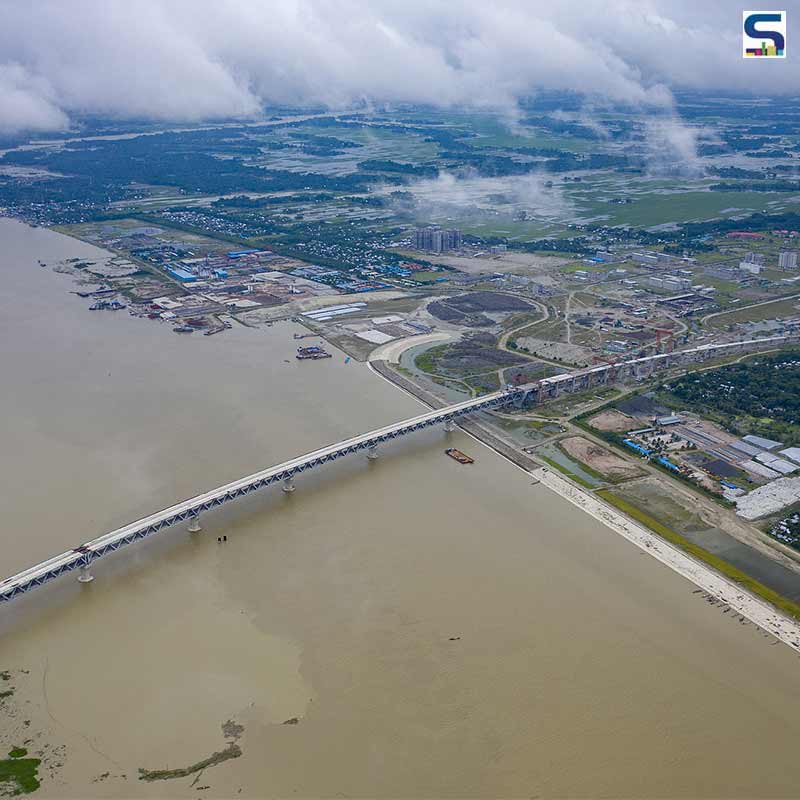
One of the country’s biggest infrastructure projects since its independence in 1971 from Pakistan, the Padma Bridge had been recently inaugurated by Bangladesh Prime Minister Sheikh Hasina. Touted to be the longest and the largest bridge in the Padma-Brahmaputra-Meghna river basins of Bangladesh, Padma Bridge is expected to help boost the nation’s development index and connect Dhaka through rail, road and ports to India directly. Read on to know more on SURFACES REPORTER (SR).
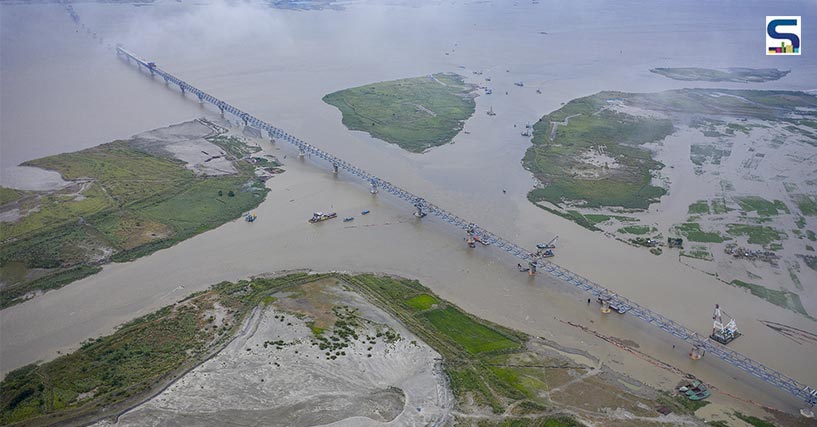 Padma Bridge had been recently inaugurated by Bangladesh Prime Minister Sheikh Hasina.
Padma Bridge had been recently inaugurated by Bangladesh Prime Minister Sheikh Hasina.
Design and structure
Worth USD 3.86 billion, the bridge is expected to help grow the country’s gross domestic product by 1.3 per cent annually, which means it will add USD 4.56 billion to the GDP in a year. The bridge has been designed by the AECOM of New Zealand. The design work of the bridge had reportedly started in Hong Kong in 2019 with ACME International of Australia, North West Hydraulic Consultants of Canada and Bangladeshi ACE Consultants Limited.
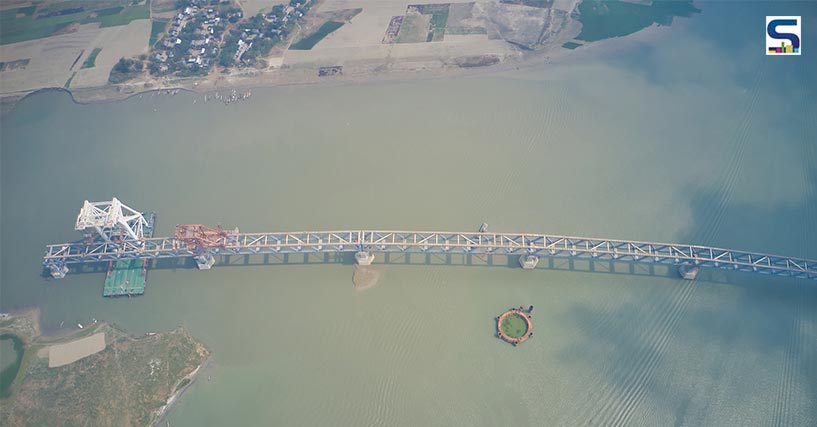 Padma Bridge is expected to help boost Bangladesh’s development index and connect Dhaka through rail, road and ports to India directly.
Padma Bridge is expected to help boost Bangladesh’s development index and connect Dhaka through rail, road and ports to India directly.
The 6.15 km long bridge carries a four-lane highway on its upper level while a single railway track is constructed on its lower level. The road connections leading to the bridge from the sides are 720 m to 875 m long, while its railway ramps are 2.36 km and 2.96 km long. With a 21.1 m width, the bridge’s double-deck structure is designed out of steel with 41 piers. Being the world’s deepest bridge, the bridge piles are installed at 120-127 m deep in the Padma River. Concrete pillars rest on these 262 steel pilings which have a diameter of about 3 m. The largest floating crane carrier in the world had been used to place its 3376 ton spans. That said, the lower level of the bridge is designed to carry a single three-rail track.
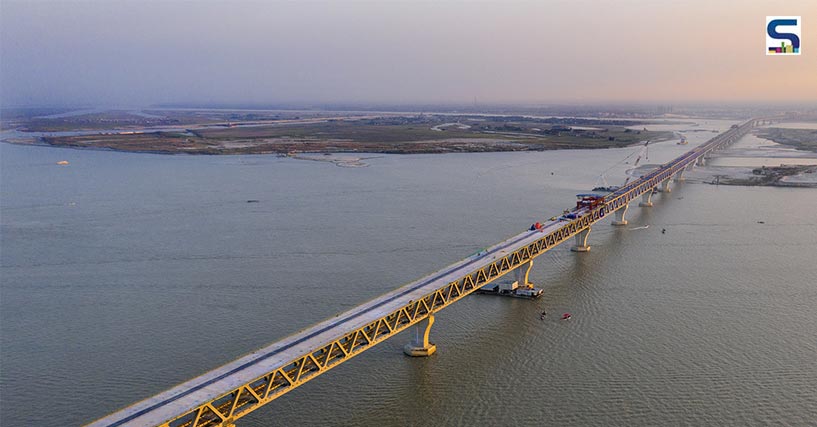 The bridge has been designed by the AECOM of New Zealand in collaboration with ACME International of Australia, North West Hydraulic Consultants of Canada and Bangladeshi ACE Consultants Limited.
The bridge has been designed by the AECOM of New Zealand in collaboration with ACME International of Australia, North West Hydraulic Consultants of Canada and Bangladeshi ACE Consultants Limited.
Benefits
Earlier, crossing the Padma River was difficult and a time-consuming process, where vehicles had to stand for hours before getting on board ferries and launches, thereby increasing vehicle load. The further journey to the districts on the other side of the river took another 3-4 hours.
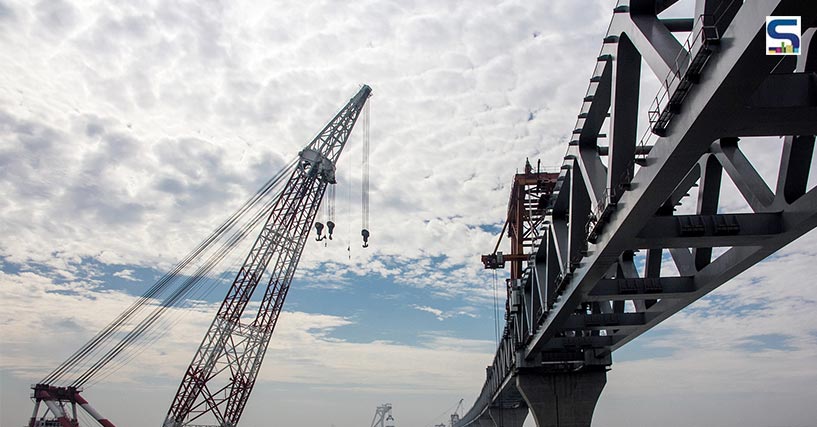 The 6.15 km long bridge carries a four-lane highway on its upper level while a single railway track is constructed on its lower level.
The 6.15 km long bridge carries a four-lane highway on its upper level while a single railway track is constructed on its lower level.
The long-awaited bridge will reportedly reduce the distance from Dhaka to the Indian border at Benapole by road by 70 km with a travel time of 4.30 hours. The Petrapole–Benapole border connects the southern part of West Bengal to the southern part of Bangladesh where buses are commonly used to reach Bangladesh from India. Additionally, the bridge is also expected to reduce the Kolkata-Dhaka train journey time by half. The multi-purpose bridge – connecting India, Nepal, China, Myanmar, Singapore and Thailand – is also expected to be a major link of the trans-Asian highway network (TAHN) as three of TAHN’s road routes pass through Bangladesh.
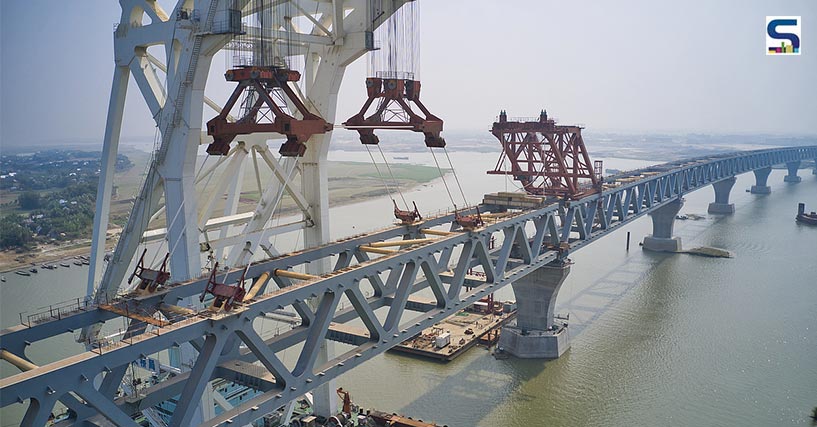 Being the world’s deepest bridge, the bridge piles are installed at 120-127 m deep in the Padma River.
Being the world’s deepest bridge, the bridge piles are installed at 120-127 m deep in the Padma River.
Additionally, Padma Bridge is expected to allow the smooth transportation of goods from the ports of Chittagong in the southeast and Mongla in the southwest at a much lower cost. The distance from Dhaka to other major destinations in southwest Bangladesh is also expected to be reduced by 100 km with a cut back in the travel time by at least 3 hours.
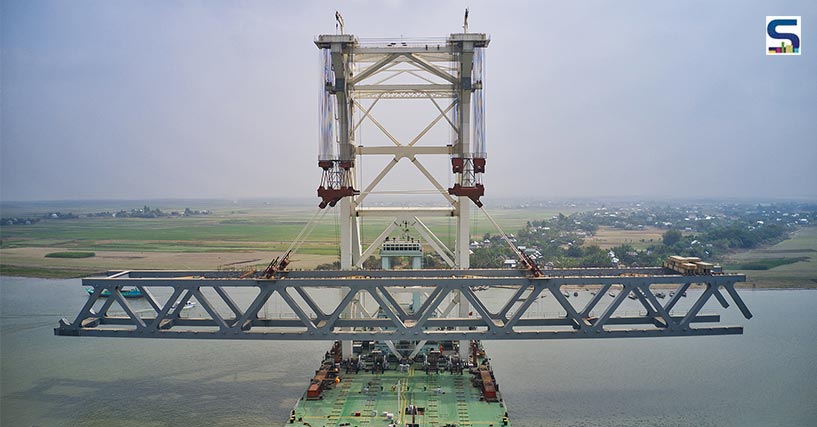 The long-awaited bridge will reportedly reduce the distance from Dhaka to the Indian border at Benapole by road by 70 km with a travel time of 4.30 hours.
The long-awaited bridge will reportedly reduce the distance from Dhaka to the Indian border at Benapole by road by 70 km with a travel time of 4.30 hours.
Other than the bridge construction, the project also involves the construction of 15.1 km of approach roads (2.3 km on Mawa and 12.8 km on Janjira), toll plazas and facilities for dredging and river bank protection, while the river control works are underway.
Image credits: Cargo-Partner